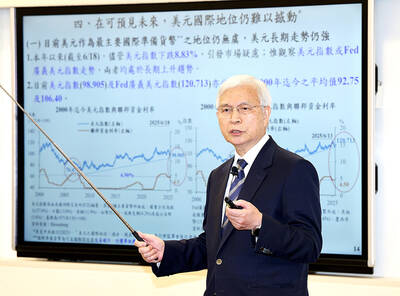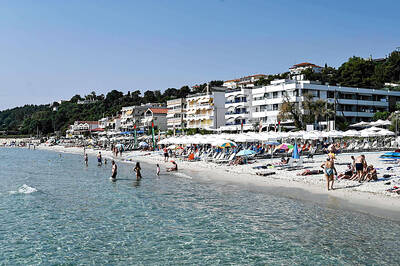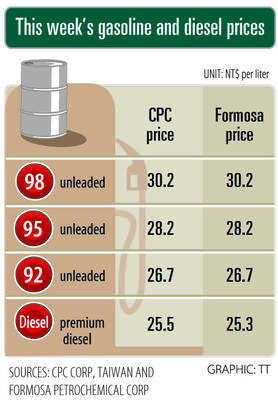Norway’s oil and gas reserves have made it one of the world’s wealthiest countries, but its dreams for deep-sea discovery now center on something different.
This time, Oslo is looking for a leading role in mining copper, zinc and other metals found on the seabed and in hot demand in green technologies.
The country could license companies for deep-sea mining as early as 2023, the Norwegian Ministry of Petroleum and Energy said, potentially placing it among the first countries to harvest seabed metals for electric vehicle batteries, wind turbines and solar farms.
However, that could also place it on the front line of a controversy over the environmental risks posed by exploiting the world’s unexplored seabeds.
Norway on Tuesday announced it was starting preparations for an environmental impact study needed to open areas of its seabed mineral exploration and production.
The move follows three years of expeditions on which Norway has found deep-sea deposits containing copper, zinc, cobalt, gold and silver, said the Norwegian Petroleum Directorate, which conducted the work.
There could be up to 21.7 million tonnes of copper — more than the world’s copper output in 2019 — and 22.7 million tonnes of zinc on the Norwegian continental shelf, Norwegian University of Science and Technology (NTNU) researchers have estimated.
However, mean estimates are far lower, at 6.9 million and 7.1 million tonnes, respectively.
“Copper mining inside Norway’s jurisdiction will probably never replace extraction onshore, but ... it can be an important contributor in meeting future global demand,” NTNU associate professor Steinar Loeve Ellefmo said.
“Deep-sea mining might also change the geopolitical climate,” he said.
The metals have been found in polymetallic sulphides, or “black smokers,” which are formed when sea water reaches magma, heats up and is flushed back to the seabed carrying dissolved metals and sulfur.
The expeditions have also discovered high concentrations of lithium and the rare earth metal scandium used in electronics, and alloys in manganese crusts that grow on bedrock, the directorate said.
Norway has mapped these deposits along the Mid-Atlantic Ridge between Jan Mayen Island and the Svalbard archipelago in the Norwegian Sea as far as 700km offshore.
TIMELINE
Once completed, the government plans public consultations on its environmental impact assessment and on a proposal for opening areas for exploration and production by the end of next year, followed by debate and a vote in parliament in the second quarter of 2023.
“Were parliament to decide to open up, exploration licenses could be issued — possibly in the second half of 2023 or in 2024,” the oil and energy ministry said.
“We are moving forward on this, and the momentum is high,” Norwegian Minister of Petroleum and Energy Tina Bru said. “This is an industry with great potential.”
Japan has similar plans, but its project with private firms is not expected to begin before some time between 2026 and 2028, an official at the Japanese Agency for Natural Resources and Energy said.
Timing would depend on metals prices and reducing the costs of deep-sea mining, the official said, speaking on condition of anonymity.
The UN International Seabed Authority (ISA), which regulates seabed mineral activities in international waters, has approved 30 contracts for exploration with China holding the most with five.
The Jamaica-based ISA was forced to postpone plans to approve rules governing the production of deep-sea minerals to this year from last year due to the COVID-19 pandemic.
However, Norway does not have to wait as its resources are not in international waters.
ENVIRONMENT ISSUES
Although demand for the metals on offer is being driven by clean technologies, exploration of the seabed presents environmental challenges of its own.
Environmentalists including Britain’s David Attenborough have called for a moratorium on deep-seabed mining until more is known about species living on the seabed and the potential effect on them.
Greenpeace called for a permanent ban in a report.
“Greater knowledge of the environmental impacts, as well as the ability to mitigate these to acceptable levels, is required before we can be confident that engaging in industrial-scale deep-seabed mining would bring a global net benefit,” an expert report that was published last month and commissioned by the Ocean Panel said.
The Ocean Panel is cochaired by Norway and groups 14 coastal states that seek to shape policy on the world’s oceans.
“We are not saying a complete and final “no” to seabed mining, but we know that it can have very substantial impact on the seabed habitat, more than oil and gas extraction,” said Peter Haugan, a professor at the University of Bergen and one of the report’s coauthors.
Giant tube worms, clam shells, crabs and micro fauna all rely on the bacterial oxidation of chemicals in fluids in the hydrothermal vents where seabed minerals are found, according to the ISA.
Companies seeking exploration licenses say that they would focus their attention on inactive “smokers.”
“I believe Norway can do this in a sustainable way, but we have to do it step by step, which has been a key success factor for developing our oil and gas industry,” Bru said.
PIVOT FROM OIL
While oil and gas have made Norway rich, the country of 5.4 million is keen to find alternatives to gradually replace its top industry and to play its role in greener energy and the growth it offers.
Deep-sea mining could generate up to US$20 billion in annual revenue for Norway toward 2050 — compared with about US$61 billion from oil and gas in 2019 — and create about 20,000 jobs, Oslo-based consultancy Rystad Energy has estimated.
Seabird Exploration, which maps out the seabed for oil and gas deposits, plans to list a deep-sea mining subsidiary on the Euronext Growth Oslo small-cap bourse this quarter.
The Cyprus-based firm believes production could start by the late 2020s and could apply technologies used in the oil and gas sector.
“We will need to design from scratch the production system, but the basic elements are there ... it will be a mixture of mining and petroleum technology,” Seabird executive chairman Staale Rodahl said.
Nordic Mining also said that it would seek exploration licenses, while Norway’s largest energy firm Equinor and oil-focused investment group Aker have not yet decided whether to get involved, they said.

NOT JUSTIFIED: The bank’s governor said there would only be a rate cut if inflation falls below 1.5% and economic conditions deteriorate, which have not been detected The central bank yesterday kept its key interest rates unchanged for a fifth consecutive quarter, aligning with market expectations, while slightly lowering its inflation outlook amid signs of cooling price pressures. The move came after the US Federal Reserve held rates steady overnight, despite pressure from US President Donald Trump to cut borrowing costs. Central bank board members unanimously voted to maintain the discount rate at 2 percent, the secured loan rate at 2.375 percent and the overnight lending rate at 4.25 percent. “We consider the policy decision appropriate, although it suggests tightening leaning after factoring in slackening inflation and stable GDP growth,”

DIVIDED VIEWS: Although the Fed agreed on holding rates steady, some officials see no rate cuts for this year, while 10 policymakers foresee two or more cuts There are a lot of unknowns about the outlook for the economy and interest rates, but US Federal Reserve Chair Jerome Powell signaled at least one thing seems certain: Higher prices are coming. Fed policymakers voted unanimously to hold interest rates steady at a range of 4.25 percent to 4.50 percent for a fourth straight meeting on Wednesday, as they await clarity on whether tariffs would leave a one-time or more lasting mark on inflation. Powell said it is still unclear how much of the bill would fall on the shoulders of consumers, but he expects to learn more about tariffs

Greek tourism student Katerina quit within a month of starting work at a five-star hotel in Halkidiki, one of the country’s top destinations, because she said conditions were so dire. Beyond the bad pay, the 22-year-old said that her working and living conditions were “miserable and unacceptable.” Millions holiday in Greece every year, but its vital tourism industry is finding it harder and harder to recruit Greeks to look after them. “I was asked to work in any department of the hotel where there was a need, from service to cleaning,” said Katerina, a tourism and marketing student, who would

i Gasoline and diesel prices at fuel stations are this week to rise NT$0.1 per liter, as tensions in the Middle East pushed crude oil prices higher last week, CPC Corp, Taiwan (台灣中油) and Formosa Petrochemical Corp (台塑石化) said yesterday. International crude oil prices last week rose for the third consecutive week due to an escalating conflict between Israel and Iran, as the market is concerned that the situation in the Middle East might affect crude oil supply, CPC and Formosa said in separate statements. Front-month Brent crude oil futures — the international oil benchmark — rose 3.75 percent to settle at US$77.01